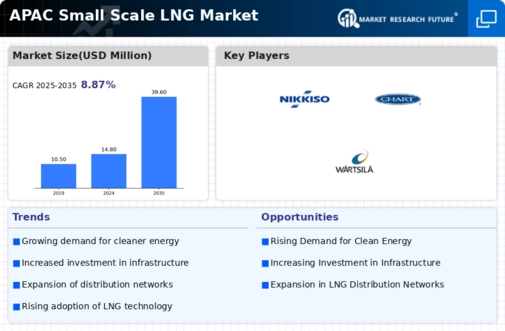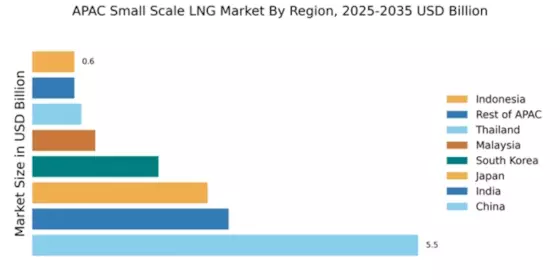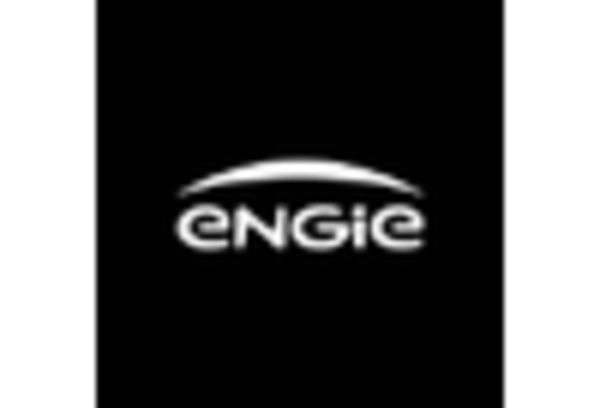China : China's Rapid Growth and Demand
China holds a commanding 5.5% market share in the small scale LNG sector, driven by increasing energy demands and a shift towards cleaner fuels. The government's commitment to reducing carbon emissions has led to supportive policies and investments in LNG infrastructure. Major cities like Shanghai and Beijing are witnessing a surge in LNG consumption, supported by industrial growth and urbanization initiatives.
India : India's Growing Energy Needs
Cities such as Mumbai and Delhi are pivotal in this growth, with major players like Shell and TotalEnergies establishing a strong presence. The competitive landscape is evolving, with local companies also entering the market. The industrial sector, particularly in manufacturing and transportation, is increasingly adopting LNG as a cleaner alternative.
Japan : Japan's Technological Advancements
Tokyo and Osaka are key markets, with major players like Engie and Sempra Infrastructure actively participating. The competitive landscape is characterized by a mix of domestic and international firms. The maritime and transportation sectors are significant consumers of LNG, reflecting Japan's commitment to cleaner energy solutions.
South Korea : South Korea's Energy Transition
Seoul and Busan are central to this market, with major players such as Gasum and Wartsila leading the charge. The competitive landscape is robust, with both local and international companies vying for market share. The industrial sector, particularly in power generation and shipping, is increasingly adopting LNG as a cleaner alternative.
Malaysia : Malaysia's LNG Market Potential
Key markets include Kuala Lumpur and Penang, where major players like TotalEnergies are establishing a presence. The competitive landscape is evolving, with local companies also entering the market. The industrial sector, particularly in manufacturing and transportation, is increasingly adopting LNG as a cleaner alternative.
Thailand : Thailand's Energy Diversification Efforts
Bangkok and Chonburi are key markets, with players like Höegh LNG and Excelerate Energy making significant inroads. The competitive landscape is characterized by a mix of domestic and international firms. The industrial sector, particularly in power generation and transportation, is increasingly adopting LNG as a cleaner alternative.
Indonesia : Indonesia's Growing Energy Landscape
Key markets include Jakarta and Surabaya, where major players like Sempra Infrastructure are establishing a presence. The competitive landscape is evolving, with local companies also entering the market. The industrial sector, particularly in manufacturing and transportation, is increasingly adopting LNG as a cleaner alternative.
Rest of APAC : Untapped Potential Across APAC
Key markets include emerging economies in Southeast Asia, where major players like Shell and Engie are exploring opportunities. The competitive landscape is characterized by a mix of domestic and international firms. The industrial sector, particularly in power generation and transportation, is increasingly adopting LNG as a cleaner alternative.


















Leave a Comment